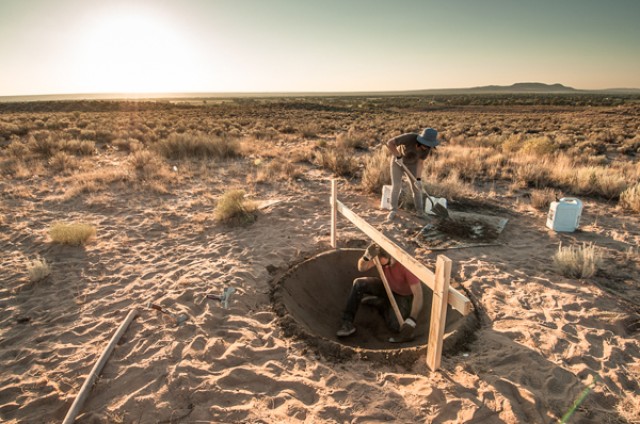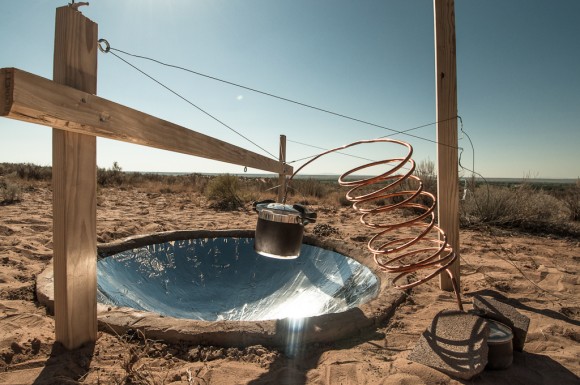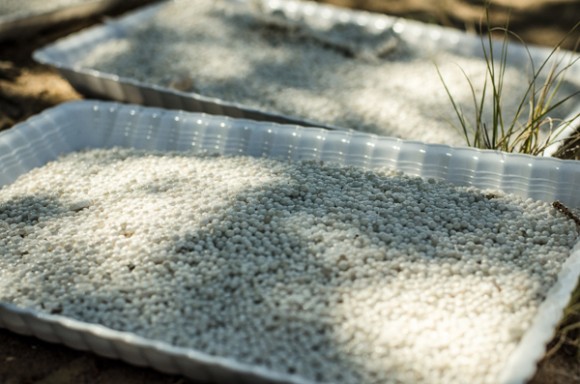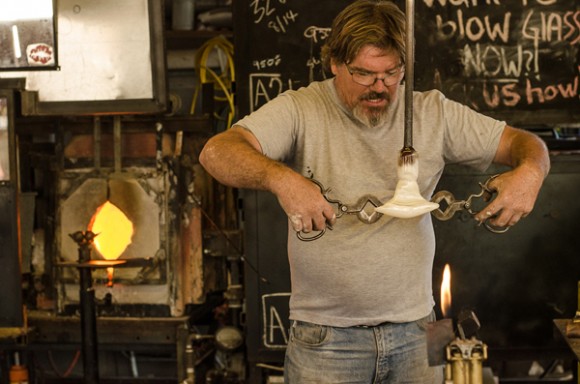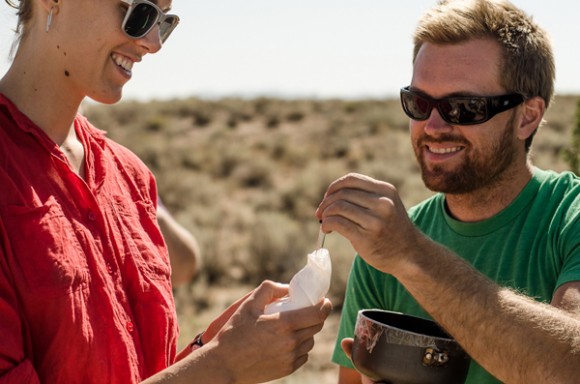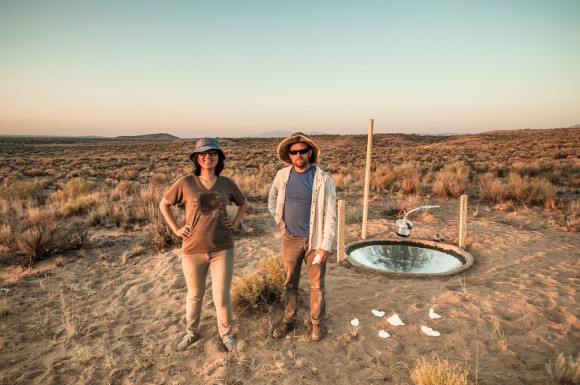In September Jamie O’Shea and I went to our project site in Los Lunas, New Mexico. The project began when I envisioned serving water gathered from the air to an audience in cloud-like drinking vessels. I was looking into existing water extraction methods such as solar stills, when Jamie told me he’s been thinking about turning his invention the Caloris Basin into an atmospheric water generator.
It was really interesting to see firsthand how the Caloris Basin is constructed. Jamie had designed it to be produced very cheaply, so it can be widely adopted in places with few resources other than human labor. One of the unexpected benefits of this project is that I learned how to mix concrete by hand, how to use a shovel and how to tar a surface.
Jamie’s water extracting process takes advantage of the deliquescent property of salt. Salt was laid out in the desert overnight to absorb moisture, which is then collected through the process of distillation.
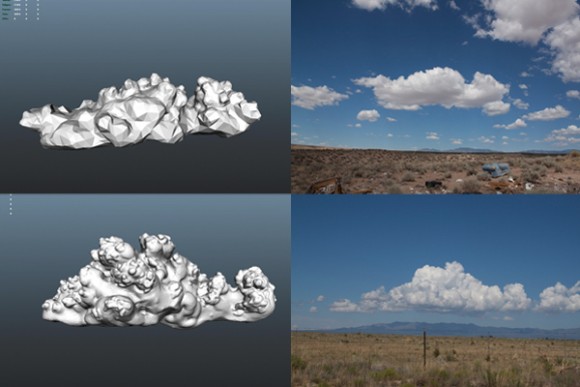
3D modeling: Jake Jefferies/Photo: Alex Clausen
Unfortunately the 3D printed ceramic clouds never arrived. A day before our first water-tasting party was due to happen, the team came up with the idea that a local glass blower might be found to make the cloud vessels instead.
Thanks to Lee from Earthbound Moon, we were on our way the next day from Albuquerque to Santa Fe, where a glass artist from Jackalope made the vessels for us. I must admit that the process of glass blowing is every bit as fascinating as 3D printing, if not more so. We gazed in childlike wonder as the glass was shaped by breathe and air (and two pairs of giant tweezers), while I suggested different things to be emphasized in the emerging forms.
The water we made was far from enough to sustain even a single person. But Jamie believes it would be possible to scale up the operation and eventually make something functional.
The project is based on a series of transmutations: sunlight turns air into water, and passing clouds become solid utilitarian objects. The wilderness of Los Lunas was ironically preserved by the land scam which made it economically unviable. It was difficult to not think about the imaginary lines which divide the desert into orderly suburban houses, marking out a community center here and a kindergarten there.
The project is commissioned and made possible by Earthbound Moon. The amazing photos were taken by Patrick Lydon.



